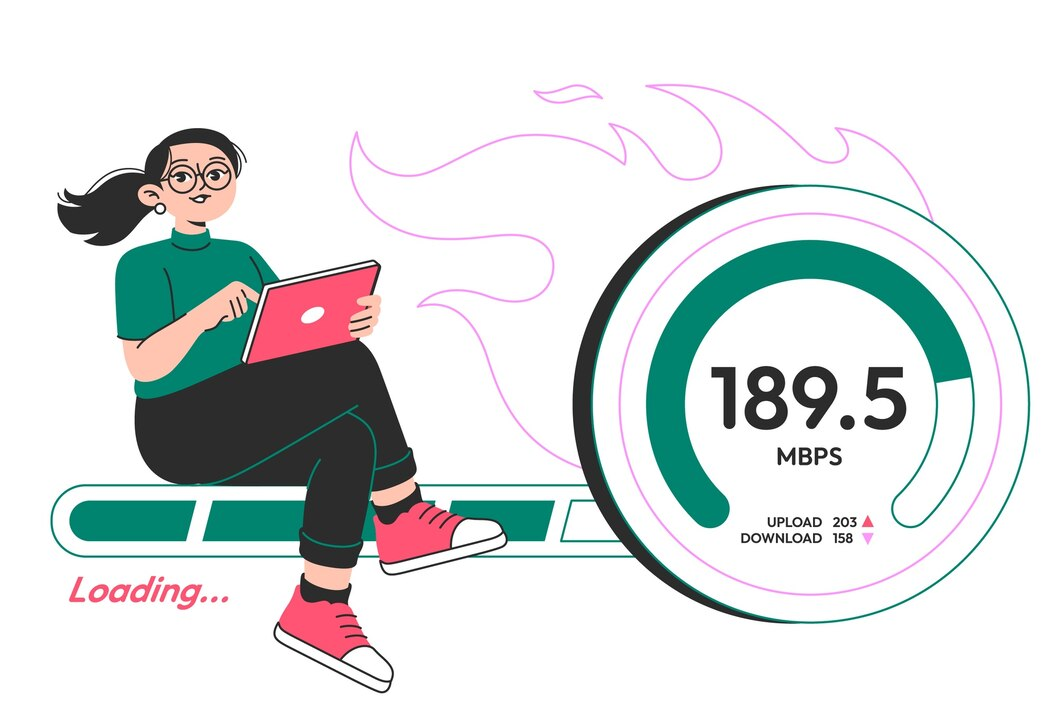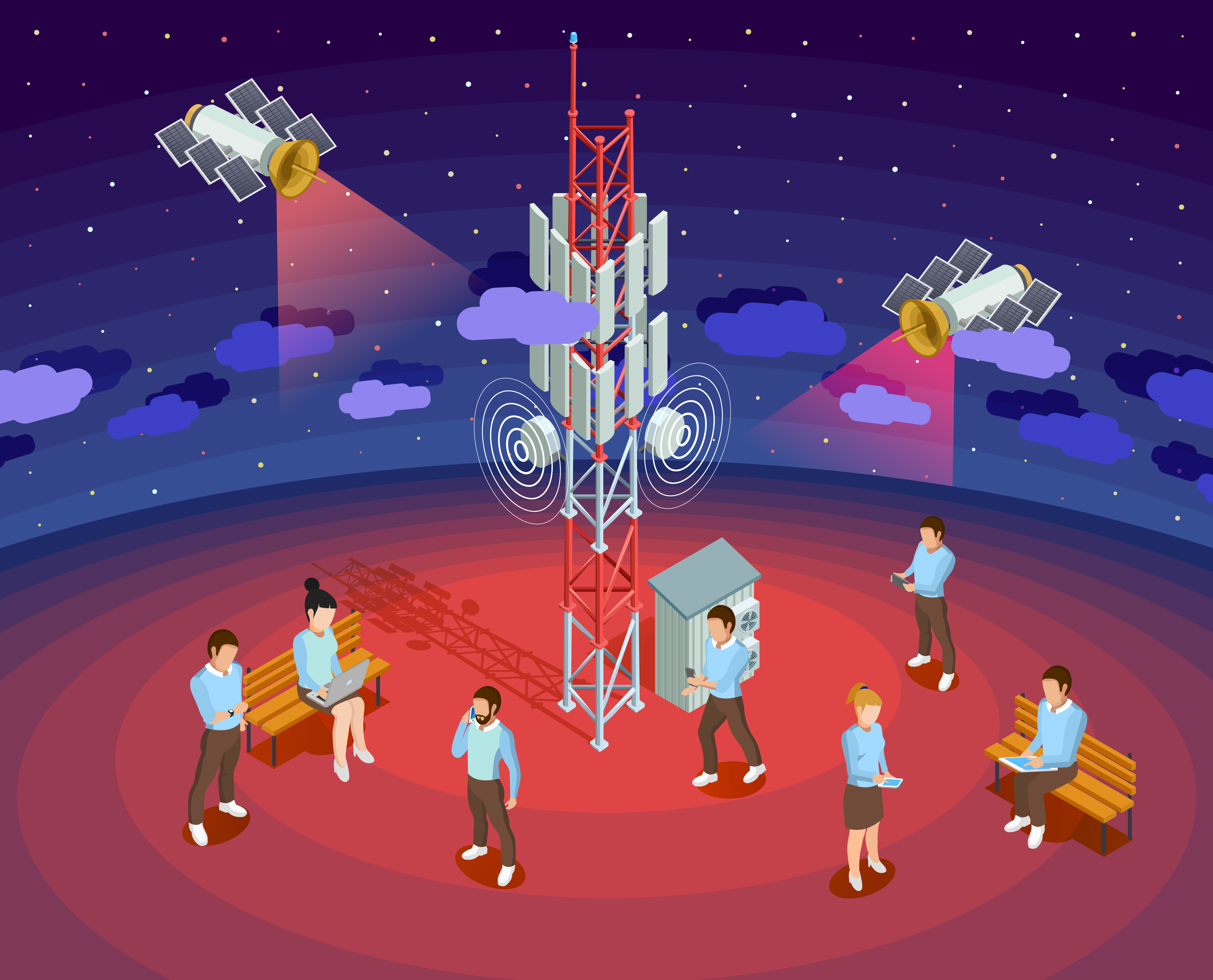Internet Speed Vs Bandwidth: Understanding the Key Differences for Business Success
-
January 23, 2025
-
8 min read

Internet performance is a critical driver of operational success for any business. The quality of an internet connection can make or break operational efficiency. Whether powering seamless collaboration, driving cloud-based workflows, or supporting customer-facing platforms, reliable connectivity is a necessity.
Yet, confusion often arises when addressing the concepts of internet speed and bandwidth—two distinct factors that directly influence network efficiency.
Though frequently used together, they represent distinct elements that impact how effectively a network performs. Gaining clarity on these concepts is critical for businesses aiming to optimise their infrastructure, reduce disruptions, and enhance overall productivity.
This blog on internet speed vs bandwidth explores the key differences between them and highlights their importance in achieving business success.
What is Internet Speed?
Internet speed refers to the rate at which data is transmitted between your device and the Internet. It is typically measured in megabits per second (Mbps) or gigabits per second (Gbps). This measurement quantifies the amount of data that can be sent or received within a specific timeframe, affecting the efficiency of tasks like loading web pages, streaming videos, or downloading files.
Download speed refers to how quickly data is transferred from the Internet to your device, while upload speed measures how quickly data is sent from your device to the Internet. Higher speeds result in faster downloads, smoother video streaming, and improved performance during tasks like video conferencing or cloud-based activities.
For example, a 100 Mbps connection allows faster file downloads than a 10 Mbps connection because it handles more data in the same timeframe. Similarly, upload speeds are crucial for tasks like video uploads, live streaming, or sharing large files.
What is Bandwidth?
Bandwidth represents the maximum data capacity of an internet connection. It determines how much data can pass through a network at any given moment, often compared to the width of a highway. A larger bandwidth allows more vehicles (data) to travel simultaneously, reducing traffic congestion and delays.
Unlike speed, bandwidth focuses on capacity rather than rate. Even a high-speed connection may perform poorly if insufficient bandwidth is available for all users and devices. For instance, a network with multiple devices streaming videos simultaneously requires higher bandwidth to prevent buffering or disruptions.
Allocating bandwidth ensures each activity gets adequate capacity. For example, prioritising bandwidth for critical business applications like VoIP or cloud services helps maintain smooth operations, even during periods of heavy usage.
Internet Speed vs Bandwidth | Key Differences
Understanding the difference between internet speed and bandwidth is essential for optimising network performance. These two components work together but have distinct roles:
1. Purpose and Role in a Network
Internet speed determines how fast data moves between a device and the internet, affecting the pace of completing specific tasks like downloading files or streaming videos. Bandwidth defines the total capacity of the network, specifying the volume of data that can flow simultaneously. Speed influences the efficiency of individual tasks, while bandwidth impacts how many tasks or devices can operate concurrently without causing delays.
2. Performance Under Multiple Users
In scenarios with multiple users or devices sharing the same network, bandwidth becomes the critical factor. It dictates how much data can be distributed across all users. Even with high-speed internet, insufficient bandwidth results in slower performance when multiple devices are active. Speed only affects how quickly individual tasks are executed but cannot compensate for low bandwidth during high traffic.
3. Handling Network Congestion
Bandwidth limitations lead to network congestion when the data demand exceeds the network’s capacity. For example, in an office setting with limited bandwidth, video calls, file uploads, and streaming can slow down the network for all users. Speed cannot prevent congestion if the total data capacity of the network is inadequate. Businesses need sufficient bandwidth to avoid bottlenecks during peak usage.
4. Scalability for Growing Demands
Bandwidth plays a vital role in scaling networks to support business growth. As the number of users, devices, and data-intensive applications increases, the bandwidth must also expand to maintain performance. Speed upgrades address immediate requirements, such as faster data transfer, but bandwidth expansions provide the infrastructure needed for long-term scalability and support for emerging technologies.
5. Influence of External Factors
Speed depends on external factors such as the type of connection (fibre, cable, or DSL) and the quality of the service provider’s infrastructure. It can also be affected by physical distance from the ISP. Bandwidth, however, is determined by the plan purchased from the provider. Unlike speed, which can fluctuate based on external conditions, bandwidth remains constant until upgraded.
6. Cost and Optimisation Strategies
Upgrading speed involves investing in faster corporate postpaid internet plans or better equipment, such as high-speed modems and routers. Enhancing bandwidth requires purchasing higher-capacity plans or employing tools to manage bandwidth allocation effectively. Businesses often use techniques like Quality of Service (QoS) to prioritise critical applications, ensuring they receive sufficient bandwidth during heavy usage periods.
Impact of Speed and Bandwidth on Business Operations
High internet speed makes sure tasks requiring quick data transfers occur without delays. Activities like video conferencing, file downloads, and accessing cloud-based applications depend on reliable speeds to maintain seamless performance. Slow speeds disrupt workflows, causing inefficiencies and frustration among employees.
For example, poor video quality during virtual meetings or delayed file uploads can hinder communication and project timelines.
Bandwidth, on the other hand, determines the network’s capacity to handle multiple users and tasks simultaneously. Businesses with limited bandwidth experience bottlenecks when employees access the internet for various activities, such as streaming, using VoIP, or working on collaborative platforms. This congestion slows down all processes, impacting productivity and service delivery.
Customer-facing operations, such as online transactions or support services, also depend on sufficient speed and bandwidth. Slow page loading or interrupted communication negatively affects customer satisfaction and retention.
A well-balanced combination of speed and bandwidth allows businesses to support modern tools, maintain smooth communication, and handle peak usage without interruptions.
As a business, you can rely on Airtel Office Internet and enjoy high-speed broadband with scalable solutions tailored to specific business needs. You benefit from symmetric speeds up to 1 Gbps, enterprise-grade security, no installation fee, zero security deposit, and affordable plans. These benefits allow businesses to operate efficiently, handle peak usage, and stay connected without interruptions.
Determining Business Needs: Speed, Bandwidth, or Both?
Evaluating Internet speed vs bandwidth needs depends on operational demands. So, businesses must analyse their specific operations to determine whether they require higher internet speed, greater bandwidth, or a combination of both. These needs vary based on the nature of tasks, the number of users, and peak usage times.
When Speed is Essential?
Internet speed is crucial for tasks requiring fast data transfers. Activities such as video conferencing, high-definition streaming, and downloading large files demand higher speed. Industries like media production, IT services, and design firms benefit from faster speeds, as delays can disrupt workflows and project timelines.
When Bandwidth Matters Most?
Bandwidth becomes a priority when multiple users or devices share the network. Offices with many employees, retail businesses offering public Wi-Fi, and organisations heavily reliant on VoIP or cloud applications need adequate bandwidth to prevent congestion. Without sufficient bandwidth, overall performance drops as multiple tasks compete for limited capacity.
Balancing Speed and Bandwidth
Most businesses require a balance between speed and bandwidth. For example, a small office with few employees may perform well with moderate speed and bandwidth. In contrast, a large organisation with data-intensive operations or remote teams requires both high speed and substantial bandwidth to handle concurrent demands.
Evaluating the number of users, types of applications, and long-term goals can help you choose a network configuration that supports operations efficiently while staying adaptable to changing demands.
Future Trends in Internet Speed and Bandwidth
The future of internet speed and bandwidth looks promising, with several key trends likely to transform connectivity.
- Firstly, the global rollout of 5G technology promises significantly higher speeds and lower latency, enabling more efficient mobile communications and the expansion of IoT devices.
- Secondly, advancements in fibre-optic technology are continuously improving both speed and bandwidth capacities, allowing for faster data transmission over longer distances without degradation.
- Additionally, satellite internet technologies aim to provide high-speed internet access to remote areas previously unreachable by traditional cable infrastructure. This expansion will foster greater inclusivity and connectivity worldwide.
- Lastly, the demand for higher bandwidth continues to grow as businesses and consumers increasingly rely on cloud-based applications, driving ongoing upgrades to infrastructure.
Conclusion
Knowing Internet speed vs bandwidth is vital for businesses aiming to optimise their operations. While speed determines how fast data transfers, bandwidth ensures your network can handle multiple users and tasks simultaneously. Balancing these two factors is key to maintaining productivity, seamless communication, and superior customer experiences.
For a reliable solution that offers fast speeds, dependable connectivity, scalable bandwidth, advanced security, and round-the-clock customer support, Airtel Office Internet stands as a trusted partner. Designed to help businesses of all sizes, it delivers internet solutions that keep your operations seamless and your growth uninterrupted.
 Share
Share









